In case you haven’t heard, The Architect’s Newspaper turned 20 this month. Our October/November issue featured a special anniversary section that shared a headline scroll of the stories that defined the last five years, a look back at those who passed away and speculation on what is yet to come. In addition to these features, which can be viewed in print format via AN’s digital issue, it also published a comprehensive list of books, buildings, cultural moments, and architecturally significant events also celebrating anniversaries and birthdays this year. Starting with the Louisiana Purchase in 1803 the list logs notable buildings and architectural happenings around the globe, while also celebrating the legacy of non-architecture items, such as the start of Google and Starbucks Pumpkin Spice Latte. It is a telling list offering a glimpse into a past that has most definitely informed the future.
220th | 1803
The Louisiana Purchase
Negotiated by James Madison under Thomas Jefferson’s presidency, this acquisition almost doubled the size of the fledgling republic through colonizing means: France didn’t control much of the territory and actually only ceded the right to dispossess Indigenous groups of their lands. Decades earlier, Jefferson established a square-format system for dividing land into property that was to be unrolled all the way to the Pacific Ocean. Today, much of this part of the country is organized accordingly, for better or worse. It’s Jefferson’s grid, we’re just living in it. Jack Murphy
140th | 1883
Brooklyn Bridge
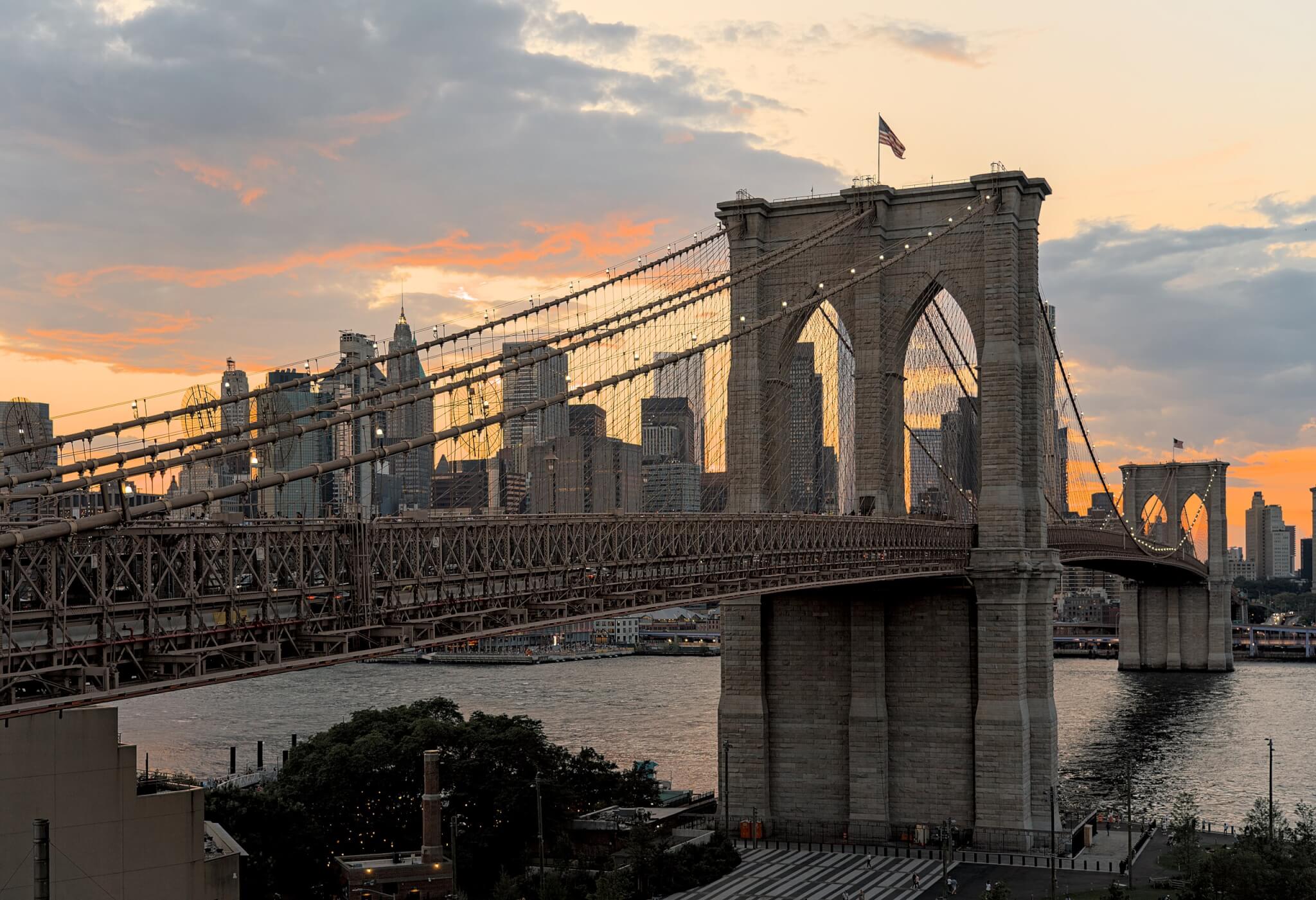
The Brooklyn Bridge, designed by John A. Roebling and completed by his son and daughter-in-law, was the first to connect Manhattan and Brooklyn. Prior to its construction, thousands of Brooklynites depended on ferries to traverse the East River, a particularly difficult passage in winter. Thirteen years after its construction, the five boroughs of New York City were brought into a common municipal charter drafted by Andrew Haswell Green. Today, the Brooklyn Bridge is a popular tourist destination, and for good reason: It physically embodies our unified metropolis. Daniel Jonas Roche
130th | 1893
Chicago World’s Fair
The book that made me want to study architecture was Devil in the White City. I’m from Chicago, and the book dramatizes events and characters that defined the city during the time of the Chicago World’s Fair. The shiny neoclassical buildings of the City Beautiful Movement that housed those otherworldly exhibitions still define city culture today. It’s fun to imagine plaster of Paris buildings being erected like theatrical sets, but the dark fascination of the book also warns of disasters that come from cost-cutting and undervaluing labor. Emily Conklin
110th | 1913
Adolf Loos’s Ornament is a Crime
The Viennese architect Adolf Loos wasn’t a good man. In recent years, it has come to light that Loos was both a racist and likely a pedophile. For more than a century, however, his canonical text Ornament is a Crime, published in 1913, changed the way architects think about decoration on buildings. While it might still be required reading on some syllabi, it should be understood with contemporary adjustments. For those who wish to inscribe it on their bodies, for a while, consider a new set of temporary tattoos designed by Sam Jacob Studio. DJR
101st | 1922
Schindler House
This duplex designed by Rudolph Schindler, an Austrian architect who landed in Los Angeles, is 101 years old, but it could easily command a stunning magazine cover today. Witness its indoor-outdoor living, flexible partitioning via shoji-like screens, prefabricated assemblies, and climate-responsive sleeping porches. Even spicier was the home’s cultural life, which teemed with creatives and creative arrangements: Schindler and his wife, Pauline, divorced, and later she returned to live in the second unit. It is prime fodder for a television series. HBO: The writers’ strike is over; where are you at? JM
100th | 1923
Cross-Laminated Timber
CLT is a buzzword these days. Architects tout it as a green alternative to steel and concrete for making homes, midrises, skyscrapers, et al. Although CLT has become all the rage lately, the technology itself is, surprisingly, a century old, patented in the U.S. by Frank Wars and Robert Watts, two entrepreneurs in Tacoma, Washington. DJR
Frank Lloyd Wright’s Imperial Hotel in Tokyo
It’s no secret that FLW’s iconic “prairie” style had more to do with Japanese sensibility and cultural knowledge than it did with the expansive grasslands characteristic of the American Midwest. The architect’s modern design for the Imperial Hotel is one of his most enduring works; it is also oddly haunting, as it was demolished in 1968. The fragment of it in The Met is one of my favorite ghosts. Its history will be reinvented yet again thanks to a new design from Atelier Tsuyoshi Tane Architects. EC
Le Corbusier’s Towards an Architecture
A century later, this enigmatic but canonical book still seduces architects of all ages with its grandiose language and daring visual assemblies. Le Corbusier was inspired by the literary experiments of the day while trying to market himself to the technocratic elite. Problems plagued the text’s distribution, most egregiously its poor translation into English by Frederick Etchells, in which Toward an Architecture became Towards a New Architecture and, as Frank Lloyd Wright complained, volume became mass. Jean-Louis Cohen’s introduction to a new translation picks apart the author’s fabrications, laying bare the tactics deployed by Le Corbusier to create an ambitious but disjointed collection of declarations, mechanical equipment, (manipulated!) photographs, and early projects. JM
Hollywood Sign
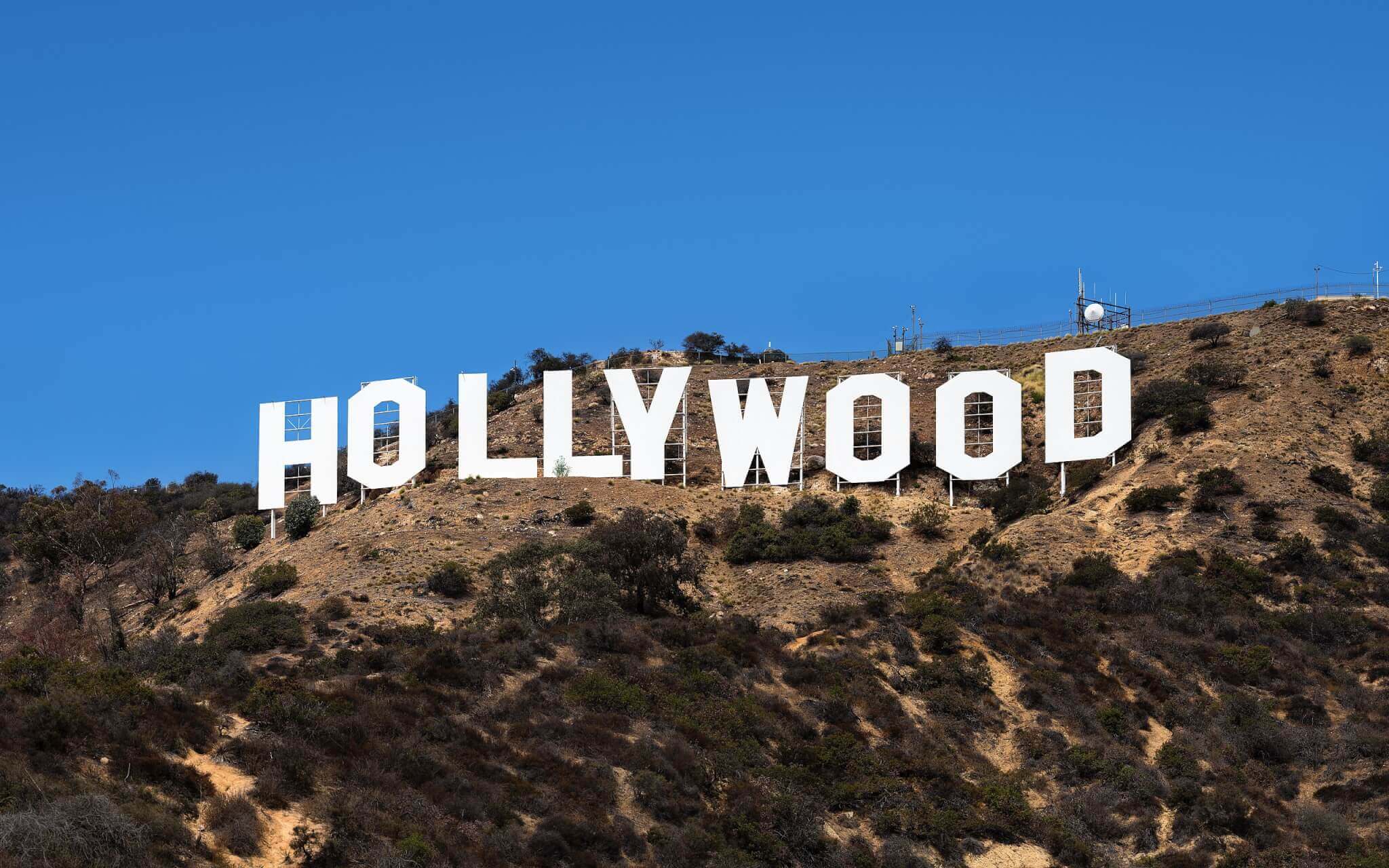
The larger-than-life letters spelling out Hollywood were first placed on the Santa Monica Mountains in 1923 as an advertisement for Hollywoodland, a nearby housing development. When installed, it included flashing lights, because 50-foot-tall letters alone weren’t enough of an attention grab. The sign was supposed to be on view for a year, but it remained in situ as the city below entered the Golden Age of Hollywood, cementing itself as a symbol of the city and its filmic legacy. Kristine Klein
90th | 1933
Nazis close the Bauhaus
Hannes Meyer’s New Bauhaus Pedagogy is a recently published anthology edited by Philipp Oswalt about its namesake’s tenure as director of the Bauhaus between 1928 and 1930. Meyer’s favorite slogan was “The people’s needs over the need for luxury,” which, along with the high concentration of Jews and women at the school, put the institution at odds with the National Socialist German Workers’ Party. The Nazi majority of Dessau closed the Bauhaus in 1933. DJR
The Athens Charter
Ninety years after the ink dried, Denise Scott Brown is still at war with the Athens Charter—a document penned by Le Corbusier in 1933 that dictated how buildings and cities should be arranged using “tower in the park” principles. Frida Grahn notes in her new anthology, Denise Scott Brown: In Other Eyes, that in 1978 Scott Brown first challenged the Athens Charter’s hegemony at a CIAM conference in Switzerland. But she hasn’t stopped. At the Center for Architecture in New York last winter, Scott Brown declared her position before a packed audience: “The Athens Charter can go to hell!” DJR
80th | 1943
Casa Malaparte
With a name that means “the wrong/evil side,” this striking Italian modern house seems to be nearly throwing itself off a cliff into the sea; or at the very least, its dramatic rooftop staircase seems to be inviting you to. Designed by a leader of the Italian Rationalist movement, Adalberto Libera, it’s been immortalized as the star of the iconic French nouvelle vague film Le Mépris. Even today it’s immediately recognizable in, and aligned with, contemporary design culture. EC
65th | 1958
Seagram Building
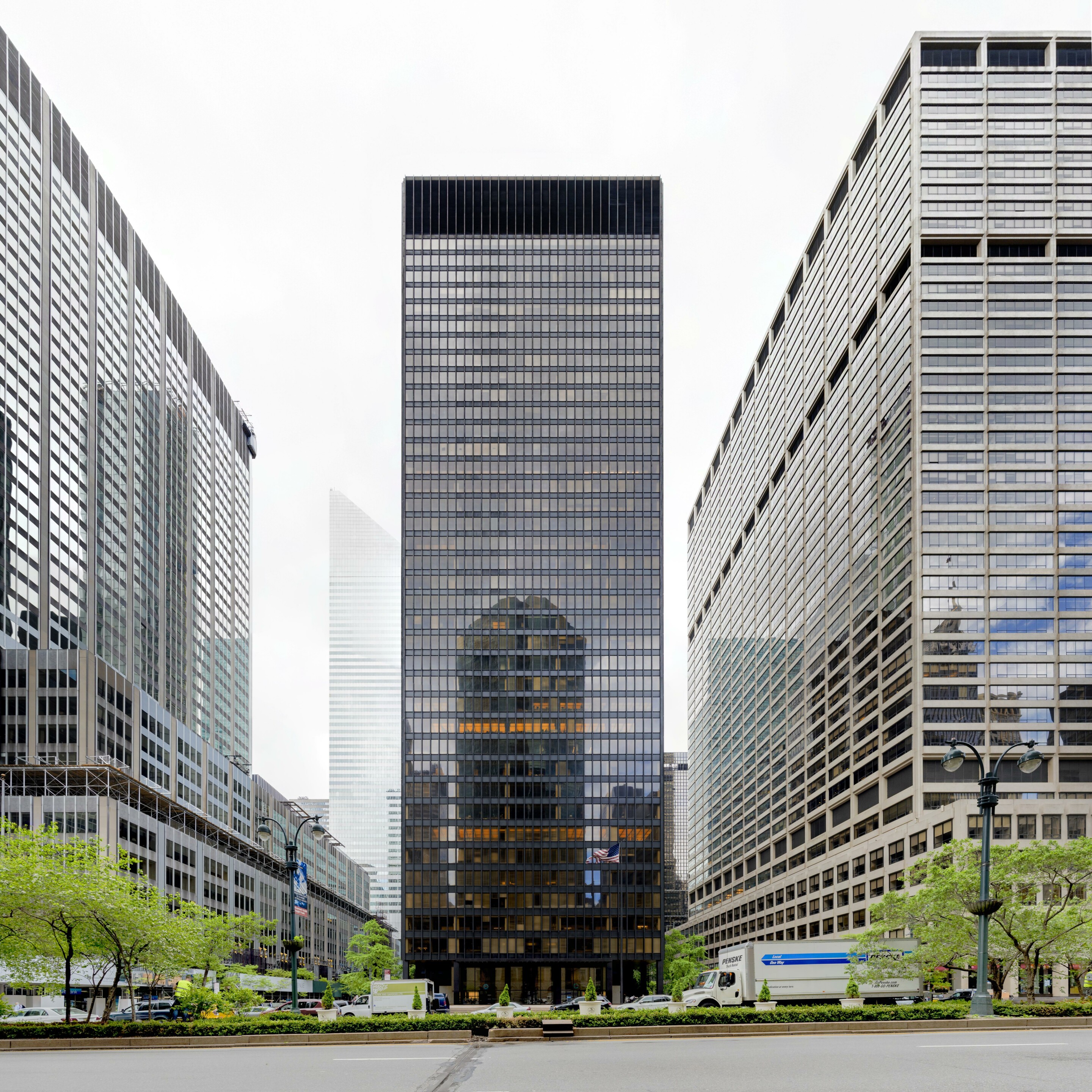
No NYC architecture tour is complete without a stop at the Seagram Building, designed by Mies van der Rohe with assistance from Phyllis Lambert and Philip Johnson. The original POPS (privately owned public space) and a temple to the modern ideal of clean, empty, surveillable space, the monolith of glass and steel endures in the architectural imagination for being the first. But maybe its plaza and bubbling fountain should be best known as the stars of the cult-favorite short film The Social Life of Small Urban Spaces. EC
60th | 1963
Federico Fellini’s 8½
Before becoming a starchitect, Rem Koolhaas was a journalist/filmmaker who studied the work of Italian director Federico Fellini. At the impressionable age of 21, Koolhaas interviewed Fellini for the Dutch magazine Haagse Post, an experience he said deeply shaped his 50-plus years of practice. Fellini’s influence on Koolhaas was apparent at the 2014 Venice Biennale in OMA’s project Monditalia, where the architects displayed 8½, released in 1963 with set design by Piero Gherardi, alongside other examples of avant-garde cinema. DJR
Beinecke Library
“A titan of industry, a decisive army general, an architect John Wayne.” This is how a lead SOM designer once described Gordon Bunshaft, whose buildings are about as machismo as they get. At the Beinecke Library, completed in 1963 at Yale, Bunshaft reveals his softer side in the creation of a simple, rectangular volume held up by Vierendeel trusses and clad with translucent, 1¼ inch-thick Vermont marble. When the lights are turned on, the material makes the building looks like it’s glowing. DJR
Met Life Building
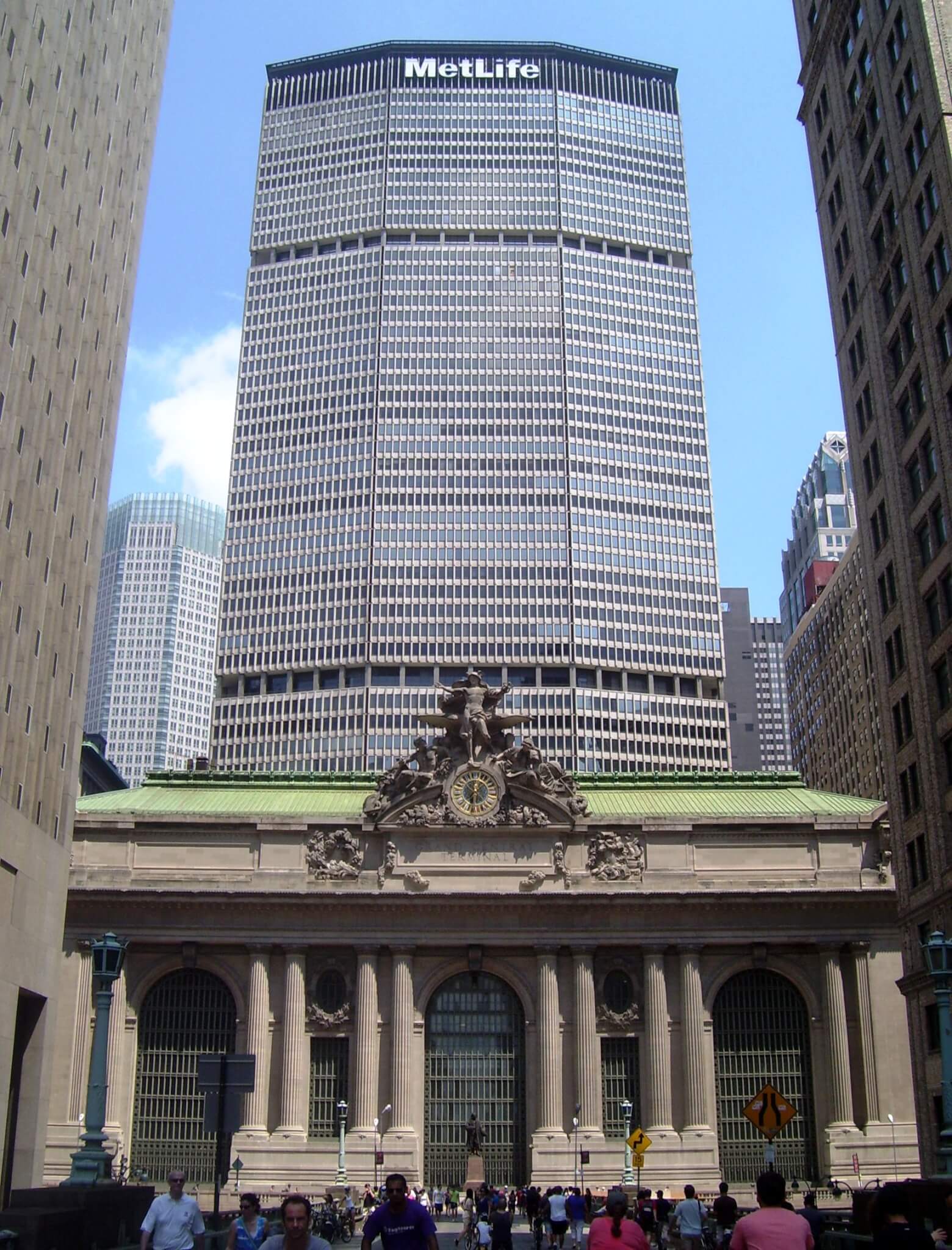
Opened as the Pan Am Building in 1963, the 59-story building with a stretched octagonal form has loomed over Grand Central Terminal and Midtown for 60 years. Designed in the International style by Richard Roth, Walter Gropius, and Pietro Belluschi, the landmark was one of the first in the city to use precastconcrete exterior walls. KK
Berlin Philharmonic
Herzog & de Meuron’s philharmonic in Hamburg arguably takes cues from Hans Scharoun’s Berlin Philharmonic, completed in 1963. Scharoun’s signature roof profile sweeps and curves from one oblique view; from another it becomes a smashed cube blown to bits, proto-deconstructivism, perhaps. Scharoun’s design replaced the original Berlin Philharmonic, which was destroyed in World War II. DJR
Demolition of Penn Station begins
McKim, Mead, & White’s neoclassical masterpiece of a railroad station was demolished in 1963 and is understood to be the beginning of the preservation movement (and preservation profession) in the United States. Today, as the debate rages over how to fix Penn Station, neotrads salivate over the thought of rebuilding the complex to its former glory. You don’t know what you’ve got until it’s gone… EC
Salk Institute
Maybe there isn’t a project quite so universally loved as Salk. Everyone who’s seen that picture of the single stream of water flowing toward the sea… we want to work there. Oh, to be a scientist working in peaceful collaboration behind an unsustainably harvested teak window, contemplating infinity. Louis Kahn and Luis Barragán really did it here. EC
50th | 1973
Robert Caro finalizes The Power Broker manuscript
“Are you finished yet?” Robert Caro was asked this painful question more times than he could count in the seven years it took him to write The Power Broker, the canonical counter- biography he finished in 1973 about Robert Moses, which earned him a Pulitzer. Bob Gottlieb, was Caro’s editor on the project. The two worked closely until Gottlieb’s death earlier this year, but oddly, they weren’t friends—rather frenemies. Their endearing relationship was at the center of Turn Every Page, a documentary by Gottlieb’s daughter, Lizzie Gottlieb, that debuted last year. In Caro’s latest memoir, Working, a nod to Studs Terkel, he notes that 350,000 words were cut from the first manuscript. Caro is quoted saying, “I still miss some of those chapters.” DJR
Co-Op City tops out
The first shareholder family moved into Co-Op City in 1968, but construction wasn’t finished there until 1973. Fifty years after Co-Op City’s high-rises topped out in the North Bronx, the complex continues to entice debate. In Freedomland: Co-op City and the Story of New York, Annemarie Sammartino leans upon her childhood in Co-Op City to tell its remarkable story. She pooh-poohs yesteryear’s critics, like Ulrich Franzen and Ada Louis Huxtable, for focusing on the estate’s aesthetics while overlooking its impressive economic and racial egalitarianism, which stands strong to this day. Amid a devastating housing crisis, this generation of urbanists, like Sammartino, seems more sympathetic to the heroic co-op by Hermann Jessor, which reminds us of the utopian optimism that architects employed not so long ago. Today, it beckons designers to do the same. DJR
New York’s World Trade Center
Minoru Yamasaki’s two identical office towers that formed part of New York’s World Trade Center complex would have turned 50 this year. When proposed, the design wasn’t well-received by critics or the public, but it came to be a beloved binary in the city’s skyline. With 110 floors each when completed, the towers held the title for most floors in a building, a number that was swiftly matched with the construction of Chicago’s Sears Tower but not surpassed until the Burj Khalifa was finished in 2010. KK
The Birth of Hip-Hop
Fifty years ago, DJ Kool Herc hosted a party at Sedgwick Houses in the Bronx that is now identified as the origin of hip-hop. Sekou Cooked quoted Craig Wilkins in an essay for AN: “Hip-Hop Architecture should be a model for all architectural practice,” he said. Perhaps this anniversary deserves a pause to reflect further on questions about diversity, equity, and justice that architectural institutions have been asking themselves since summer 2020. EC
Sydney Opera House
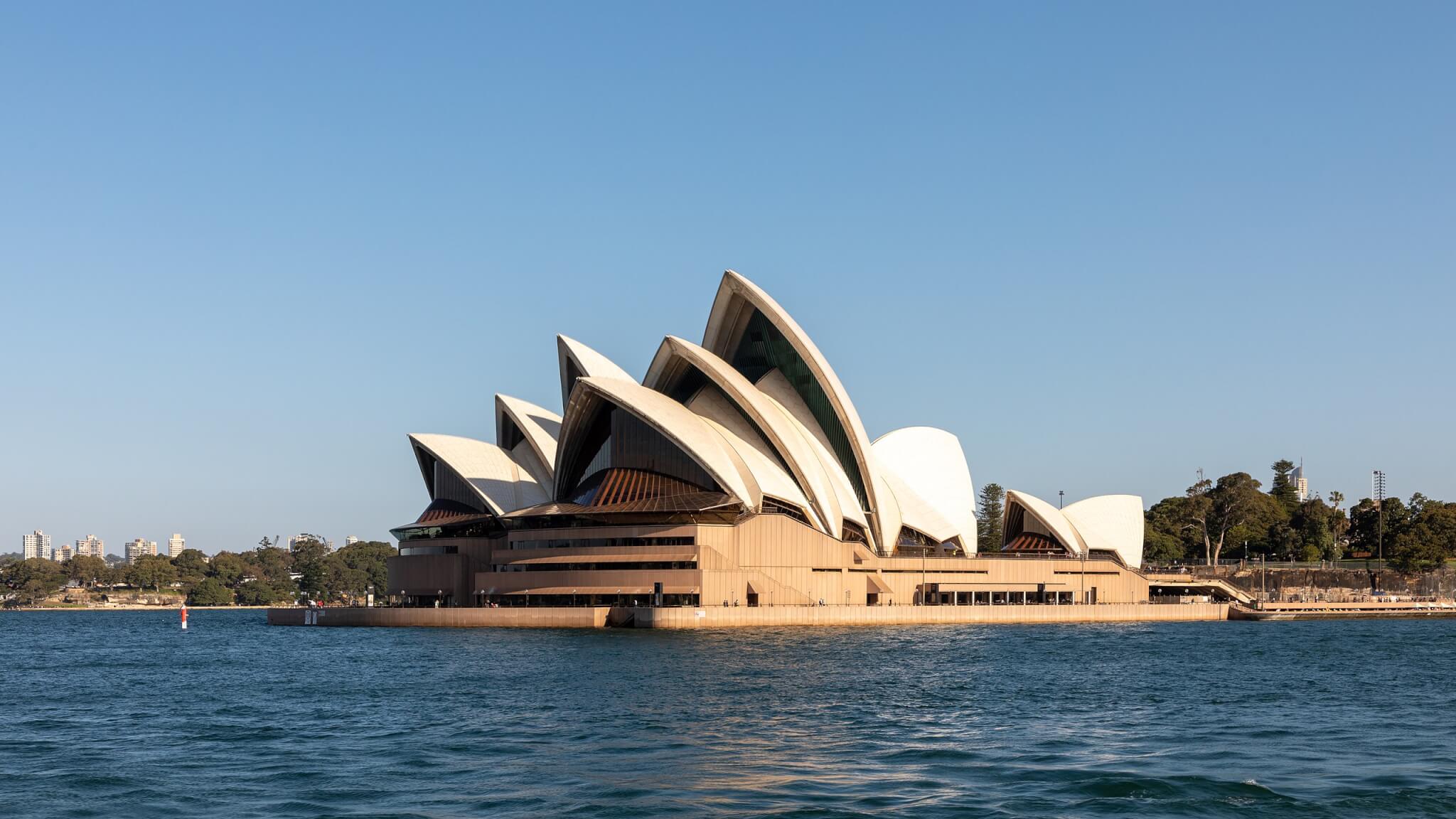
Danish architect Jørn Utzon’s submission to a 1956 design competition for an opera house in Sydney was number 218 out of 233. The assessor’s report lauded Utzon’s design for being “simple to the point of being diagrammatic.” The skyline-defining building was one of the first to use computer-aided design to lay out its unique geometries. Last year, ahead of its 50th, the Sydney Opera House completed a decade-long renovation to upgrade acoustics and accessibility. KK
40th | 1983
Parc de la Villette competition
Bernard Tschumi, OMA, Zaha Hadid, Jean Nouvel: The 1983 Parc de la Villette competition received submissions from the 20th century’s biggest names at the onset of their celebrity. In total, the competition had 470 entries. Tschumi’s winning proposal and the drawings that accompanied it went on to become a canonical architectural project. DJR
Ricardo Bofill’s Les Espaces d’Abraxas opens in Paris
Architecture nerds were thrilled to see Ricardo Bofill’s Les Espaces d’Abraxas appear in The Hunger Games 2, a dystopian film starring Jennifer Lawrence, in 2015. The grandiose people’s palace where Greco-Roman columns take on surreal proportions in Paris’s Noisy-le-Grand suburb served as a backdrop for the postapocalyptic Hollywood thriller. DJR
30th | 1993
Het Nieuwe Instituut
Het Nieuwe Instituut is a model for architecture institutions worldwide, as it curates and maintains some of the most label-defying archives and architectural projects in the world. It has a legacy of rebellion and has more often than once engaged in legal gray areas, as shown in exhibitions and publications like Architecture of Appropriation. EC
LEED
Thirty years ago, the environmental movement was absorbed into neoliberal paradigms as “sustainability.” The USGBC began its LEED certification program in 1993, right around the time that Francis Fukuyama declared the end of history and Burners moved their late-summer gathering from Baker Beach in San Francisco to Black Rock Playa. JM
Francis Fukuyama declares The End of History
Francis Fukuyama’s The End of History and the Last Man was published the year I was born, which theoretically makes me temporally citizenless. In 1993, Fukuyama argued that the thesis-antithesis-synthesis dialectic championed by Hegel and later flipped on its head by Marx in the form of historical materialism had come to a conclusion with the West’s defeat of communism. “The end of contradiction! War! Hunger! Human suffering!” Fukuyama declared. It’s a position he’s been forced to clarify ever since. DJR
25th | 1998
“I don’t know; Google it.” The search engine’s name has become a verb synonymous with the need to know just about anything. Since it first launched as the internet’s front door it has morphed into so much more than just a place to look things up, adding a map feature, video streaming, an email service, and now AI-powered capabilities to its repertoire. Why know things when Google knows everything? KK
20th | 2003
Bush declares “Mission Accomplished”
OMA/AMO’s 2004 treatise Content, designed by Simon Brown and John Link, is graphic design par excellence. It features U.S. president George W. Bush’s buffoonish mug touting a McDonald’s “Freedom Fry” alongside Saddam Hussein dressed up like Rambo and Kim Jong II as the Terminator. The book was published one year after Bush infamously declared “Mission Accomplished” aboard the U.S.S. Abraham Lincoln—a misstatement, to say the least. In 2021, researchers at Brown University calculated that the war started by Bush’s administration claimed the lives of 432,093 Iraqi and Afghan citizens. DJR
Pumpkin Spice Latte
In early 2003, Starbucks executives and product scientists gathered in the “Liquid Lab,” in the coffee company’s Seattle headquarters, to gobble down bites of pumpkin pie, followed by sips of espresso. The result of the top-secret meeting was one of Starbucks’s top-performing beverages. Twenty years later, hundreds of millions of Pumpkin Spice Lattes, or PSL for short, have been consumed, and for many the annual launch of Starbucks’s fall menu marks the start of autumn. KK
AIANY at LaGuardia Place
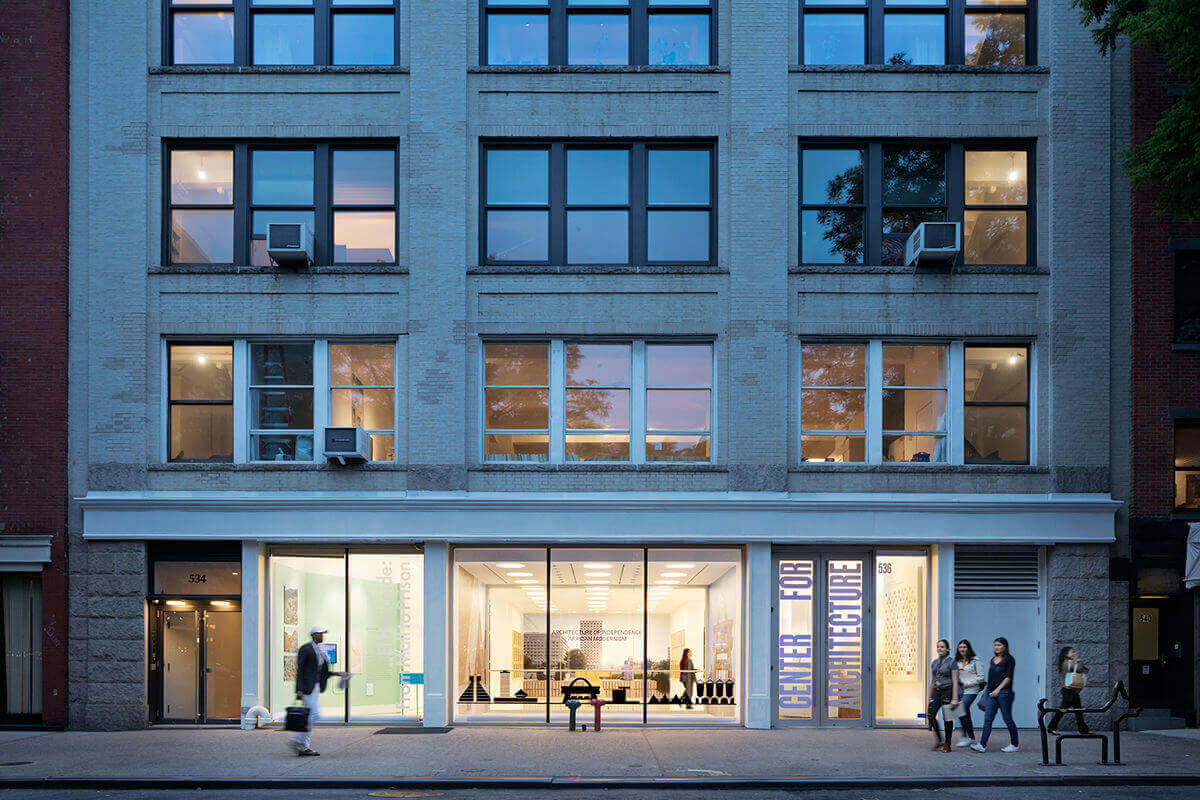
The AIA’s oldest and largest chapter has been around since 1857. As appreciated in the first issue of AN, AIA New York’s headquarters and public-facing Center for Architecture operate out of 536 LaGuardia Place. When it opened, then executive director Frederic Bell said in The New York Times, “This is not a clubhouse for architects but a space that could engage the public.” Renovated by architect Andrew Berman, the building is defined by the 16- by 18-foot void cut into its floor plate, placing the offices, event spaces, and exhibition galleries at subterranean levels, while making the activities visible from the street. KK
Log
The first issue of this lauded theory journal, edited by grande dame Cynthia Davidson, debuted 20 years ago at Urban Center Books on Madison Avenue. Produced by just two people out of Peter Eisenman’s studio under the umbrella org of the Anyone Corporation, the name was inspired by a ship’s log, whose job is to record and observe. (I’ve also heard speculation regarding Twin Peak’s log lady and the log function on a graphing calculator as other sources.) Still, the logo is a literal log, and there’s an inflatable log pool toy in the office. Now on issue 58, Log continues to observe the built environment in a committed, text-forward format. EC
10th | 2013
The Architecture Lobby
In 2013, Peggy Deamer attended a program led by Who Builds Your Architecture, and a switch was flipped. With a cadre of early supporters—including AN’s Bill Menking— she founded The Architecture Lobby, a not-quite-union of thousands of architects and designers, as well as those adjacent to the profession, who examine the connections between architecture and labor or lack thereof. The Lobby is the most exciting step toward workers’ rights, representation, and acts of refusal in the architecture industry. These changes can lead to greater equity in the field and much-needed climate action. EC
5th | 2018
Dank Lloyd Wright
Before the rascals stormed Instagram, Dank Lloyd Wright was clowning via Facebook. Despite its rapid proliferation of influence during the pandemic, the meme page got its start in 2018, an internet moment when folks like Patrik Schumacher were still writing impenetrable walls of text on their Facebook pages to talk about architecture online. DJR
The Shitty Architecture Men List
Perhaps nothing has gotten those in power to prick their ears up more than the Shitty Architecture Men List, a spreadsheet where people anonymously listed the names of supposedly sexually abusive men. Five years later, it appears that Richard Meier and later David Adjaye are the only people to have faced serious consequences, via an investigation about alleged acts that took place years after the list was circulated. DJR







